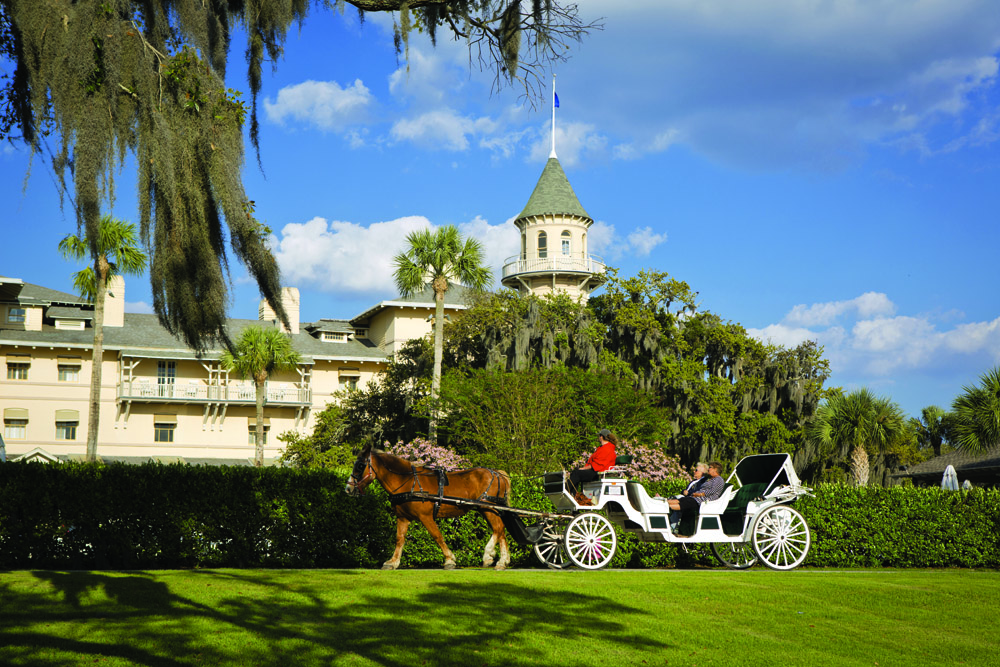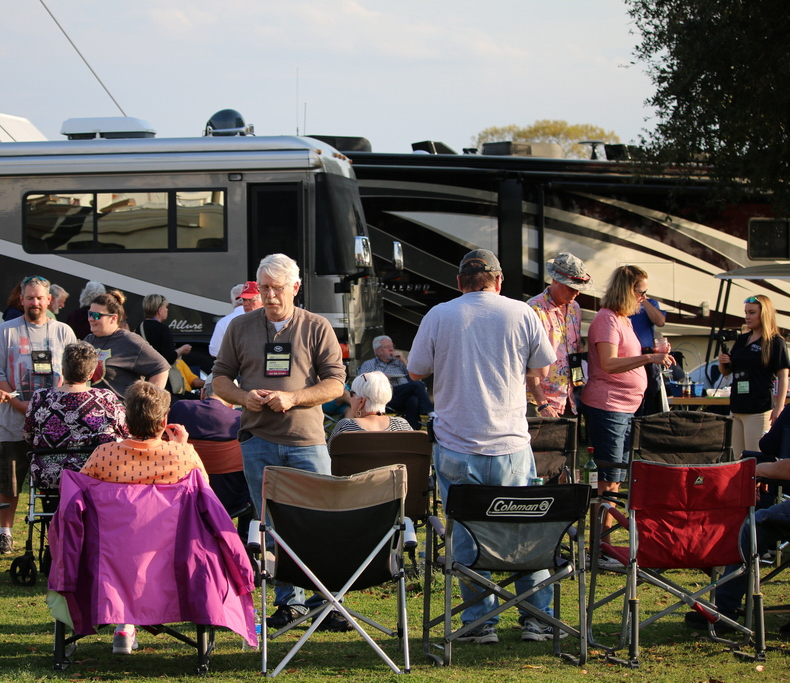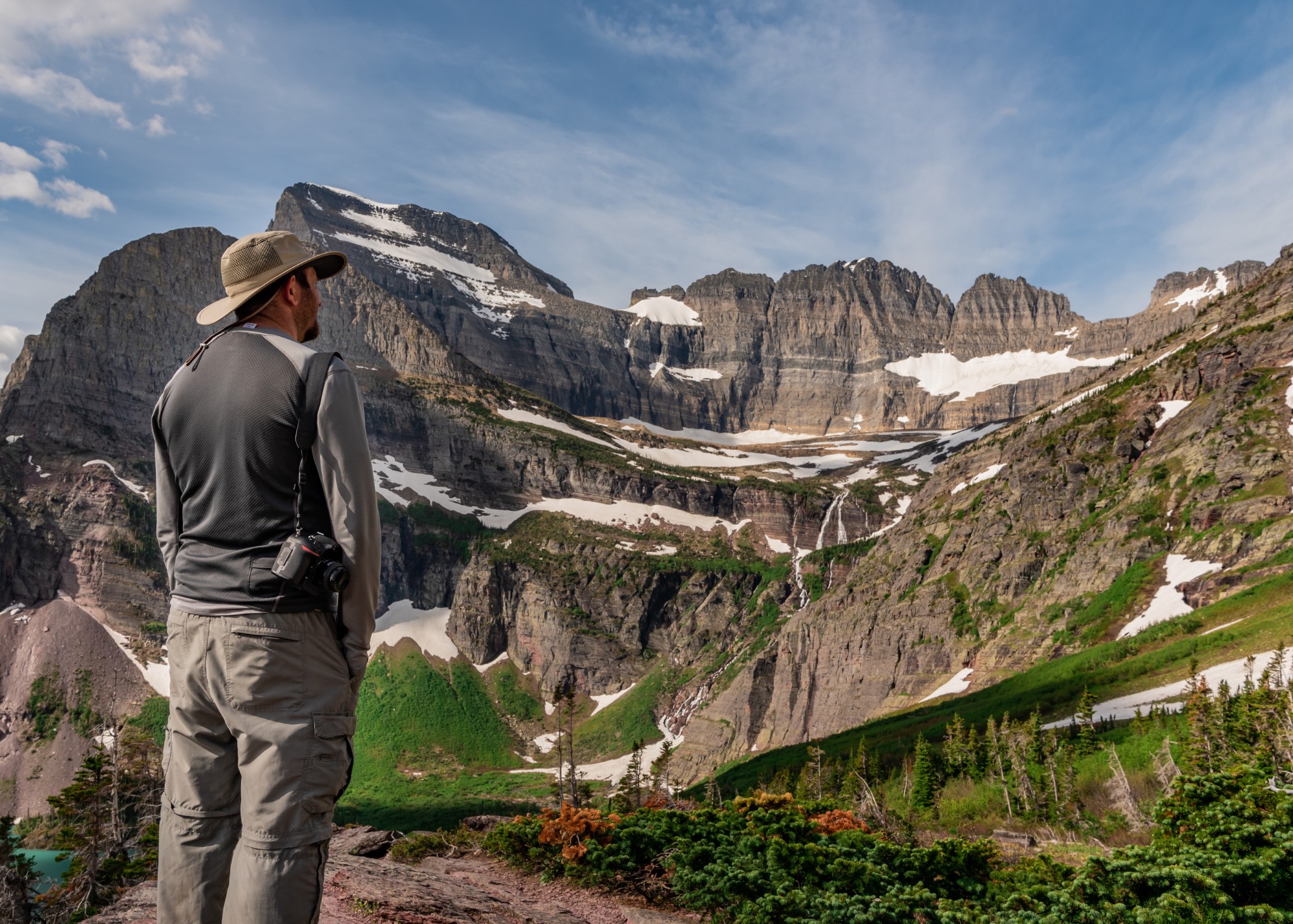Don’t miss these wonderful waypoints on your north-south travels…
By James Stoness

Outside of the busy centres of Atlanta, Augusta, and Columbus, and past the touristy attractions of Savannah, Athens, and Macon, is the mainland city of Brunswick and its four Barrier Islands off the Georgia Coast, which are considered the State’s crown jewels that are often overlooked as a great RV destination.
This infamous coastline stretches approximately 110 miles – from the Savannah River in the North to the St. Mary’s River in the South (or between Savannah and Jacksonville, FL.) – and is home to four of eight Barrier Islands – St. Simons, Sea, Little St. Simons, and Jekyll, where sub-tropical climates prevail and the sun always seems to shine.
The smallest of the four is Jekyll. While the other three islands provide on-site, five-star amenities and resorts, Jekyll shares some of the richest history in the State of Georgia and is big on attractions that appeals to countless of visitors every season.
Located just off the main artery of I-95, it’s one of only three of the barrier islands that’s accessible by RV and once there, settle in at Jekyll Island Campground that encompasses 18 wooded acres of magnificent oak trees and 206 campsites ranging from tent sites to full hook-up, pull through sites with power, cable TV, water and sewerage. Wi-Fi and DSL Internet is free for registered guests. For added convenience, an on-site general store is available for essentials while an IGA is nearby for more specific groceries or supplies.
Camping – not too mention fishing, kite flying, hiking, biking, and numerous water-based activities – can be enjoyed 12 months of the year. For RV’ers, the local (and only) campground is known to be just as accommodating as the deep south. The only problem about visiting this region is not wanting to leave.
History

Jekyll Island shares a rich history with Georgia and the infamous coast. Perhaps what Jekyll Island is prominently noted for is its nearly five-decade “gilded period” from the late 1800s to the mid-1900s. Though its history spans centuries before this period – the completion of the Jekyll Island Club in late 1887 by engineer Newton Finney and his brother-in-law, John Eugene DuBignon made Jekyll one of the most sought after and exclusive-only vacation destination in North America, if not the world.
Known for its sand beaches and many activities such as hunting (as the island was commonly stocked every season), fishing, boating, skeet shooting, golf and tennis, socializing at the prestigious Jekyll Island Club was the core of activities for life on Jekyll with its expansive grounds, grand dining rooms, and upscale accommodations.
It was once an acclaimed destination among the social elite as residents included some of the most powerful and leading families in North America including J.P. Morgan, William Rockefeller, Vincent Astor, Joseph Pulitzer, and William K. Vanderbilt, to name just a few. Lavish winter residences “or cottages” were built and the nation’s richest would enjoy everything the area had to offer.
Tourism was banned from the general public and the Island was accessible only by water – making the island even more private and exclusive for the limited 100 or so residents and visitors that were allowed access.
It remained a private playground for the affluent up until 1942, just before the height of World War II, when travel restrictions, rationing, and the shift of workers to support the war effort forced the club to close. Following the war, the elite never returned – as many opted for the warmer, trendier, and more fashionable regions such as south Florida. The Island, and all of its property, was then acquired by the State of Georgia, turning the area into a State Park, thus offering access to the general public.
Tourism Born

With the development of a causeway and modest commercial development, the island today attracts thousands of visitors and seasonal residents every year to enjoy the exciting attractions and activities.
To relive Jekyll’s exciting past, start at the Jekyll Island Museum, which maintains three historic sites: the Horton House Historic Site ruins, the Wanderer Memorial, and the Jekyll Island National Historic Landmark District. There’s more than 20,000 artifacts showcasing the island’s unique heritage and seasonal guided (via tram) and self-guided tours are available. Visitors can admire the extravagant winter residences of “Sans Souci,” a six-unit building owned in part by J.P. Morgan; “Indian Mound”, a residence of the Rockefeller family; the Goodyear Cottage completed in 1906; the Crane Cottage, circa 1917; and many others.
The Island, however, offers so much more. Its elaborate history is shared with modern attractions that cater to the whole family. Perhaps one of the most popular attractions is Jekyll Island’s 10-mile sand beach, which consists of three separate beaches, plus many amenities, services and activities.
Located adjacent to the Jekyll Island Campground is the Clam Creek Picnic Area, which provides access to the popular Driftwood Beach. Following years of natural erosion, majestic – almost haunting – driftwood and trees have been uprooted and scattered along the sand beach. Nonetheless, the beach is expansive where visitors can pop-up a sun umbrella and cool off with a swim, or paddleboard, kayak, and bike. Horseback riding is also available.
A great spot for the whole family to enjoy lunch or the whole day, this area has picnic areas/tables, and grills. The fishing pier is another highlight. Fish, crab, or shrimp, the choice is yours as The Jekyll Island Fishing Center sells ice, bait, and all the gear that’s required to catch and serve a fresh fish dinner. Fishing licenses are required.
At the most southern end of Jekyll is another beach and picnic area, St. Andrew’s Picnic Area that extends from Glory Beach and overlooks Jekyll Sound (the riverside of the island). With many similar amenities as Clam Creek, this area of the island is also popular for shrimping and fishing, while shorebird sightings, shelling and even frequent dolphin sightings can also be enjoyed.
Great Dunes Beach, too, offers easy beach access and is conveniently located across from playgrounds and a mini-golf course. However, regardless, of the beach location, each offers scenic sunsets and magnificent views of the Atlantic. (*Ed Note all beaches are greatly affected by tides, so access may be limited at high tide).
Wild Wildlife

While only approximately 35 percent of the island has been developed commercially, a large portion of the island consists of lush wilderness home to many species of wildlife – from various birds such as Rosedale Spoonbills (local to the region), Hawks, and Great Blue Herons to alligators and sea turtles. Popular Turtle Walks, conducted through The Georgia Sea Turtle Center, are available to view these magnificent reptiles in their natural habitat. Visitors can check out the Sea Turtle Center from March to October and November to February (9 a.m. to 5 p.m.), which was opened in 2007 to raise awareness in support of the region’s habitat and wildlife conservation challenges. Private tours of the center are available, as are daily tours, behind the scenes tours, and a sea turtle camp for kids in June and July.
James Stoness is the author of ‘Touring North America’, a series of travel guides on CD to help you plan your trips across North America.
Visit his website to read his novels and travel guides – https://stonessrvtravel.com/






















